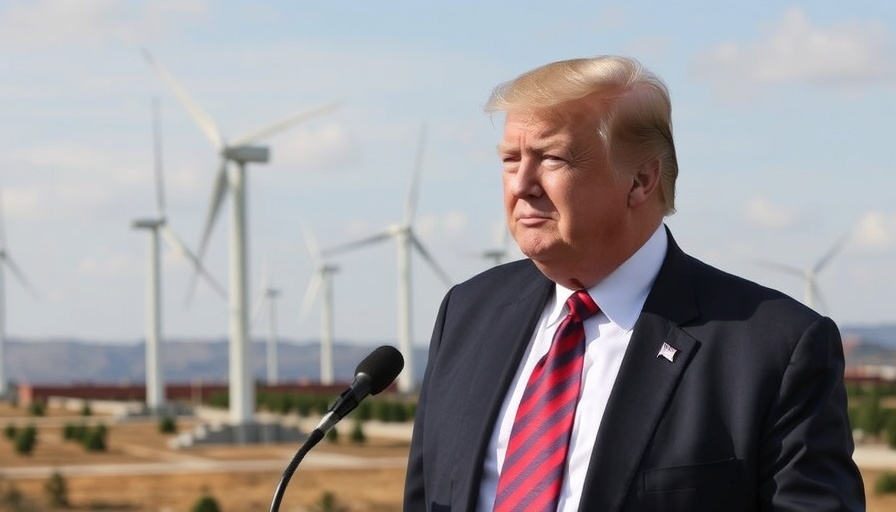
How Political Landscapes Shape Renewable Energy Policies
In the ongoing debate over renewable energy, political landscapes often dictate the direction and pace of innovation. With Former President Donald Trump making headlines for his controversial stance against renewables, there is a growing realization that these energy sources are not just an environmentally friendly option, but an essential component of America’s energy strategy. The transition towards renewables like solar and wind power has gained unstoppable momentum, irrespective of political opposition.
The Economic Case for Renewables
One of the most compelling arguments for renewable energy is its potential to drive economic growth. According to the International Renewable Energy Agency (IRENA), the renewable sector has already created millions of jobs globally. For homeowners aged 30-65, this translates to a lower cost of energy bills as more affordable solar solutions hit the market. Businesses are not far behind—merging profitability with sustainability is becoming a competitive advantage that many smart companies cannot afford to overlook.
Real-World Impacts of Renewable Energy Initiatives
Across the U.S., states with strong renewable energy initiatives have seen significant economic benefits. For instance, California leads the nation in solar energy production and employment in the renewable sector, showing that a robust renewable strategy correlates directly with job creation and energy independence. This dynamic challenges the notion that traditional fossil fuels are necessary for a thriving economy.
Counterarguments: The Challenges Ahead
While the shift toward renewables seems inevitable, there are voices highlighting the challenges that lie ahead. Critics argue about the reliability of renewable sources, claiming they depend too heavily on weather conditions. Yet, advancements in battery technology and energy storage systems are effectively mitigating these concerns. Emerging solutions like grid-scale batteries and smart energy management systems present innovative ways to address the intermittency of renewable sources.
Future Predictions: A Solar-Powered Society
Looking ahead, the projected growth of the solar industry is staggering. By 2030, solar energy capacity could quadruple in the U.S., according to the U.S. Department of Energy. This optimistic scenario not only points toward environmental benefits but also improved energy policies and heightened energy equity across different socioeconomic segments. As more homeowners understand the long-term financial advantages of investing in solar solutions, the market is set to flourish.
Emotional and Human Interest Perspectives on Renewable Energy
When discussing renewables, we shouldn't overlook the personal stories that underscore the significance of this transition. Families who have chosen solar energy report a sense of empowerment and connection to something larger than themselves—acting for the environment and future generations. This human aspect creates a compelling narrative: the war for renewables isn’t just political but deeply personal. As a homeowner or a conscientious consumer, investing in renewables symbolizes a commitment not just to lower energy costs, but also to leaving a healthier planet for the future.
Conclusion
In summary, as the political landscape continues to evolve, it's becoming clear that the renewable energy movement is not only a response to environmental need but also an economic strategy. Trump’s war on renewables may indeed lose its potency against a backdrop of rapid technological advancement and societal change. As a homeowner, eco-conscious consumer, or business owner, the choice to embrace renewable energy solutions is not just smart, it’s essential for a sustainable future.
Let’s embrace the solutions that not only promise lower energy bills but also a cleaner, more resilient energy infrastructure. Now is the time to invest in renewable energy for a more sustainable future.
 Add Row
Add Row  Add
Add 



Write A Comment